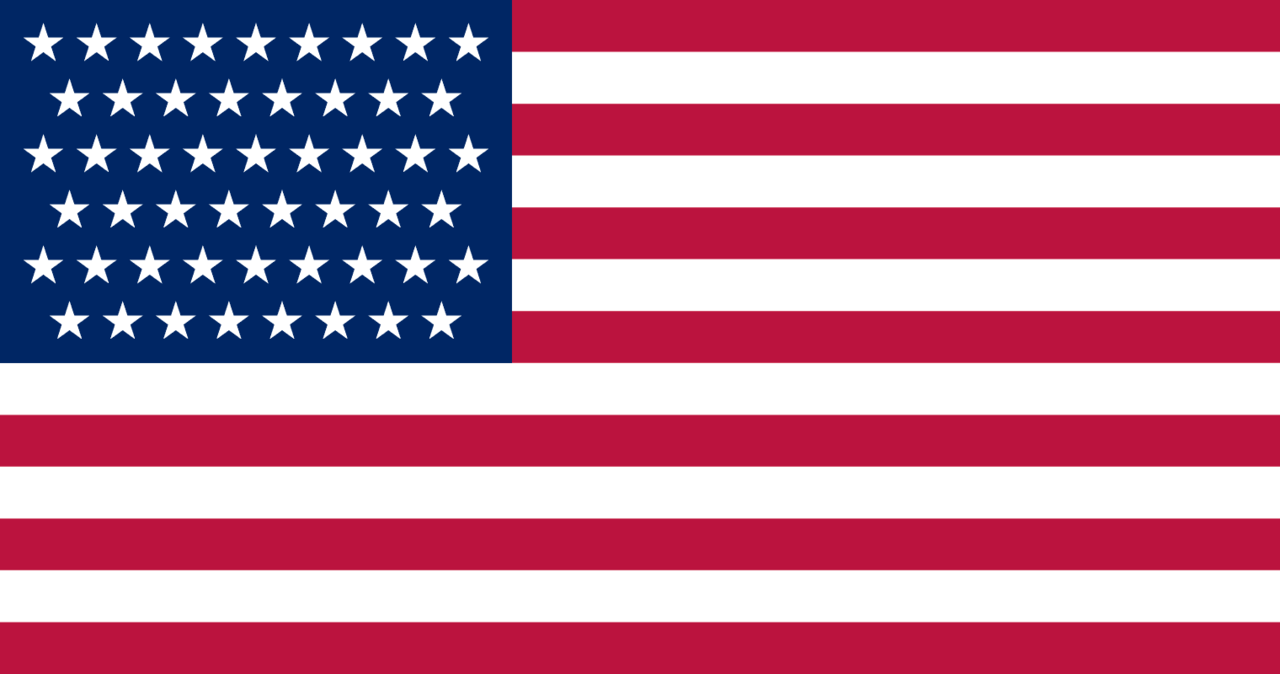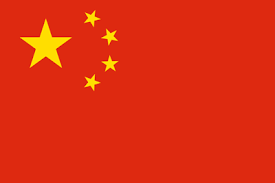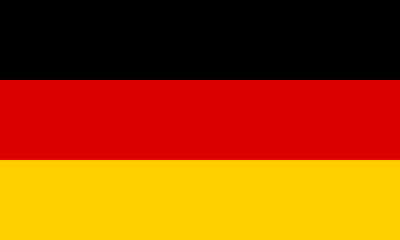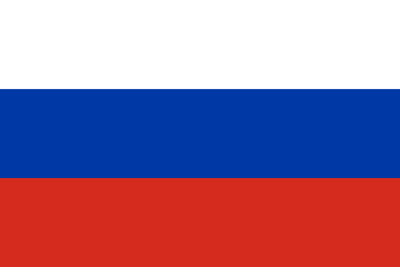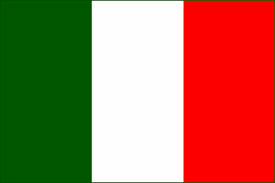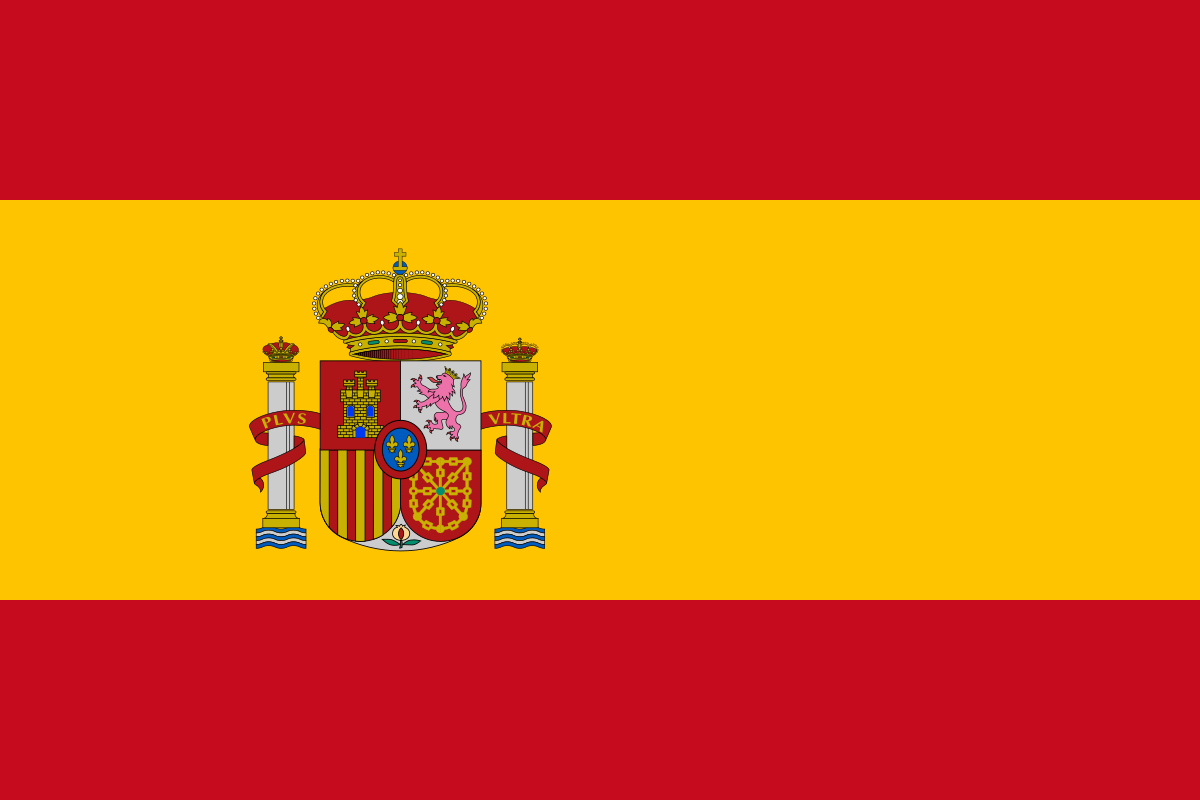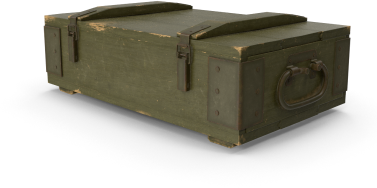On the night of June 5th to June 6th, 1944, Operation Neptune was on. The VII Corps commanded by General Joe Collins was assigned to Utah Beach. Contrary to Omaha Beach, the landing on Utah was not only on the sand but also inland. Divided into two steps.
In 1943 Field Marshall Erwin Rommel flooded the swamps on the outskirts of Utah Beach by closing the dam of La Barquette and the locks. By doing so, fields and inland roads were flooded making the landing of the 4th Infantry Division more complicated. Indeed, even if the 4th Infantry Division takes control of the coastline the outfit would have to go through this natural obstacle before to reach “dry land” and to secure a strong beachhead.
Although the fields and roads were flooded, nevertheless four causeways were not as they are on a higher level. These causeways stretch from the coastline of Utah Beach and run through the flooded area. Those causeways had to be secured behind the flooded area to isolate the “landing zone” of the 4th Infantry Division. This mission was assigned to the airborne troops of the 101st Airborne Division.
The 101st Airborne Division, also known as « Screaming Eagles » was commanded by Major General Maxwell Davenport Taylor. It's a baptism of fire for these men. And they have a “rendezvous with destiny”. The 101st Airborne Division was composed of the 501st Parachute Infantry Regiment, 502nd Parachute Infantry Regiment, 506th Parachute Infantry Regiment and 327th Glider Infantry Regiment.

Plan of attack for the Airborne Troops.
The 502nd Parachute Infantry Regiment with the 377th Field Artillery Battalion were assigned the mission on June 6th, 1944, to secure “Causeway 3” and “Causeway 4” and the 155mm gun position at Saint-German-de-Varreville and had to be dropped on “Drop Zone A”.
Each battalion had a specific objective as follows:
- 1st Battalion will have to clean up buildings codenamed W-X-Y and W (See the map below)
- 2nd Battalion will have to take control of the 155mm gun position.
- 3rd Battalion will have to be used as a backup for the 2nd Battalion.
 Map of the drop zone and objectives of the 502nd Parachute Infantry Regiment.
Map of the drop zone and objectives of the 502nd Parachute Infantry Regiment.
The 1st Battalion of the 502nd Parachute Infantry Regiment didn’t experience any antiaircraft enemy fire until six minutes prior to the jump. While approaching the Drop Zone the enemy fire increased and it was possible to see machine guns opening fire. When Lieutenant-Colonel Patrick F. Cassidy jumped, he realized that bullets were passing over his head. Once his feet touched the soil of France, he tried as quick as possible to get rid of his parachute, but a German machine gunner saw him and fired at him.
Contrary to other paratroopers, Lieutenant-Colonel Cassidy was very fortunate as he jumped directly on the road intersection at Saint-Germain-de-Varreville. Enemy bullets bounced on the pavement and then got free of his parachute. Trying to find cover, enemy mortars fell around him. Moving while the mortar gunners were reloading, he ran along a hedgerow and made contact with three other paratroopers.
 ©IGNRemonterletemps2025
©IGNRemonterletemps2025
Strange as it is, the friendly troops were his radio operator, his runner and another paratrooper.
Realizing who they were, Lieutenant-Colonel Cassidy asked them: “Where are you going?”; “We are looking for the Colonel” one replied.
This little party was moving toward locations where they had seen other paratroopers being dropped, on the way they picked up Lieutenant-Colonel Robert L. Strayer, Commanding officer of the 2nd Battalion of the 506th Parachute Infantry Regiment and four other soldiers. Lieutenant-Colonel Strayer had hurt one of his leg so Lieutenant-Colonel Cassidy took command of the party.
He didn’t know where he was as he said, “I haven’t seen any road sign or a native”.
While still moving, Lieutenant-Colonel Cassidy met his machine gunner (Lieutenant Jack Williams) who was wounded in the jump. Moving in the Cotentin countryside with antiaircraft and machine gun fire all around them, the party under the command of the Lieutenant-Colonel was getting bigger and bigger as their crickets kept cricking and boys who were hidden in the hedgerows started to come out.
They reached a crossroad and decided it was time to determine where they were precisely. Lieutenant Williams was sent north to search for a road sign and brought back Captain Fred Hancock with a about 30 other men from “C” Company. Captain Hancock told Lieutenant-Cassidy that he passed a road sign “Foucarville, 2 kilometers north”. In the meantime, Lieutenant Samuel B. Nichels from “A” Company arrived at the crossroad.
Lieutenant-Colonel Cassidy used then his air photograph and realized he was not far away from his objective.
(Note: All together the party was about 200 men, most were from the 506th Parachute Infantry Regiment).
Both Lieutenant-Colonels held a meeting, and Lieutenant-Colonel Cassidy to go south and ready to move on his objective. He told Lieutenant-Colonel Stayer (he was not yet ready to walk) “Then clear your men out and let me go. I’m ready”.
Altogether, Lieutenant-Colonel Cassidy, Lieutenant Williams, Captain Hancock and Lieutenant Nichels’ men marched toward Saint-Martin-de-Varreville.
Halfway to Saint-Martin-de-Varreville, the party of Lieutenant-Colonel Cassidy came across Captain Frank Lillyman and his pathfinder’s party. This last one informed Lieutenant-Colonel Cassidy that the gun position he was headed to was already bombed by the Allied Air Force.
At sunrise, the small party reached a house out near the gun position. A patrol rushed towards the house, while the German fled to the first gunfire they heard. Taking possession of the liberated house, Lieutenant-Colonel Cassidy established his command post.
Then, Lieutenant-Colonel Cassidy went to the gun position where he made contact with Lieutenant-Colonel Steve A. Chappuis of the 2nd Battalion, 502nd Parachute Infantry Regiment. He mentioned his plan to establish a defensive area around his command post and set up roadblock at the intersection to prevent a German counterattack to the beaches which coincided with his other mission.
He had sent a patrol of 15 men to clean up buildings codenamed “W” – “X” – “Y” – “Z” which were used as housing for the servants of the Saint-Martin-de-Varreville battery.
 Representation of the Saint-Martin-de-Varreville crossroads
Representation of the Saint-Martin-de-Varreville crossroads
Once the command post had been set up, the improvised patrols headed for its objective under the lead of Staff Sergeant Harrison Summers of “B” Company. These men don’t know each other. It’s the hazard of the jump that scattered the sticks and gathered soldiers from different companies in this party.
Staff Sergeant Harrison Summers kicked the door of the first house and shot four Germans inside. The second house was easily taken. After that, a machine gun manned by Private William A. Burt was set up on the road to fire on the third house. Sergeant Summers smashed the door and cleaned the house by himself, just after Lieutenant Elmer F. Brandenberger was wounded by an explosion
Sergeant Summers kept on clearing the area. With Private John Carmin, they cleared the next five houses in the same way, one entering with a tommy gun, the other covering him with a carbine, while the Germans fired on the road. They did not take any prisoners. Heading towards a building, they smashed the door and discovered that it was a mess hall with 15 Germans in it. Sergeant Summers started to shoot when they stood up.
 The alignment of the farm complex codenamed “W” – “X” – “Y” – “Z”.
The alignment of the farm complex codenamed “W” – “X” – “Y” – “Z”.
Then, they kept moving toward a barrack. As they closed in on the hedgerow, a German sniper fired at them and killed several men. They were also targeted by the occupants of the barracks which stopped what was left of the party retreating to the hedge, leaving their dead behind. A machine gun fired tracer bullets into the haystack which burst into flames and spread to the shed. The Germans in it came out and were shot as they tried to flee for their lives.
In the meantime, Lieutenant-Colonel Cassidy tried to reach by radio the command net to inform them that the gun position was in their hands. It was only at 0815am that he could make contact with 4th Infantry Division Headquarters. He assigned a patrol to Sergeant H. J. Snyder of “B” Company to verify on “Causeway 4” as the first wounded began to arrive.
During the day, Private Patrick J. Gallery saved numerous lives, by driving a cart on the road, exposing himself to sniper fire, and carrying wounded soldiers to the aid station. More prisoners and wounded men continued to arrive, among them Lieutenant Brandenberger who informed Lieutenant-Colonel Cassidy that the skirmish at houses “X” – “Y” – “Z” were getting hot.
Lieutenant-Colonel Cassidy had to deal with life-or-death issues, support of division forces, messenger reports. Sergeant Snyder came back and told him that the patrol had cleaned out the German position in the church of Saint-Martin de Varreville. He sent patrols to set up roadblocks. Then, he could inform the 4th Infantry Division Headquarters that “Causeway 4” was clear now.
He gathered the men he had in reserve, placed them under the command of Lieutenant Richard Evers and sent them to join the fight at the buildings codenamed “W” – “X” – “Y” – “Z”. Finding an 81mm mortar, he sent it to Lieutenant Homer J. Combs at “W” – “X” – “Y” – “Z” positions, with a volunteer who said he could handle the mortar.
In order to treat Lieutenant Brandenberger, whose arm was hanging on by a few shreds of flesh, Sergeant Forbes asked Lieutenant-Colonel Cassidy what he could do as he said: “I might be able to stop the bleeding by amputating the arm. Then I could get to the bleeding. But I can’t make a decision on that. It’s up to you”
He got Sergeant Robert L. de Pinquertaine, and they set off into the fields in search of medical supplies. They found plasma, bandages and medical necessities that they loaded onto the stretcher. He sent other men to collect what they could find, while more wounded arrived at the command post.
In addition to the 81mm mortar, a bazooka was also sent by Lieutenant-Colonel Cassidy to Staff Sergeant Roy Nickrent to support the men at “W” – “X” – “Y” – “Z” positions. He took position in a ditch on the other side of the road and fired seven shots into the roof of the barracks. He saw smoke coming from the house.
Lieutenant Evers, meanwhile, tried to join the men on the firing line but was hit as he crossed the hedge. Lieutenant Combs and Lieutenant Theodore S. Richards who arrived in time also saw the smoke. The Germans emerged from the burning building and were shot by the men near the hedge as they tried to flee.
Those who managed to escape to the fields to the west found themselves facing the upcoming forces of Captain J. J. Hatch, whose patrol eliminated the Germans, while Private Stanley Gruber was wounded in the legs during this skirmish. On the way to the command post, they took around thirty prisoners.
After the buildings had been thoroughly cleaned, Sergeant Summers’s men could take a short break in the last house and had a smoke. Cleaning the complex took more than five hours.
“A” Company had established roadblocks north of Foucarville. A messenger was sent to Lieutenant-Colonel Cassidy to warn him that they were engaged against several hundred Germans.
When Captain Hatch and the group from the regimental assembly, under the command of Lieutenant-Colonel Michaelis, arrived at the command post, Lieutenant-Colonel Cassidy asked the latter to take charge of carrying the wounded to the beaches. That way, he could attend to more pressing matters.
At 0600pm, Lieutenant-Colonel Cassidy took the whole battalion to move out to Foucarville. West of the village, he found the forward command post established by Major Thomas H. Sutcliffe. “A” Company needed mortar support, because they were under intense fire from the German strongpoint.
Around 0200am, Lieutenant Harold Hoggard and his men launched an offensive on the German stronghold of Foucarville. Entering the courtyard, Captain Fitzgerald was hit by sentry fire but shot him down in his fall. Lieutenant Hoggard, having had him examined, retreated 700 yards and picked up a few men before returning to Foucarville
Scouts were sent to the next crossroads, where they picked up two men on the way. What was left of the patrol tried to bypass the flank from the north and took two prisoners. The last men left in the village came under fire from the hillside and the houses. The prisoners revealed that the strongpoint was held by 150 Germans. Lieutenant Hoggard returned to the forward command post. He knew that if he wanted to take the German strongpoint in Foucarville, he needed more men to assault the hill
Lieutenant W. A. Swanson was ordered against Foucarville. He noted that nothing had been done about the roadblocks. Mid-morning, he joined Lieutenant Hoggard's party with orders to set up the Roadblocks n°1 and n°2 immediately. Sergeant Thelan and his party were assigned to Roadblock n°3. The last roadblock established was the Roadblock n°1, held by three gunners and a grenadier, later reinforced by a machine gun. The men faced constant German fire pushing in from the coast. A sniper in the church tower also fired on the position.
 An American roadblock with a machine gun.
An American roadblock with a machine gun.
The roadblock n°2, held by a bazooka and a grenadier, was facing the strongpoint on the top of the fortified hill during the day. From their shelters, the Germans fired machine guns in their direction.
 ©IGNRemonterletemps2025
©IGNRemonterletemps2025
At 0430pm, Lieutenant Swanson went to another road junction and set up a heavily defended roadblock with 2 machine guns, 2 bazookas and 15 pounds of explosive. At 0500pm, the battalion on its way to its position used explosives to stop a German convoy coming from Beuzeville-au-Plain. The explosion stopped the first vehicle. The bazookas fired four rounds at the following trucks and the machine guns fired at the Germans, who were getting out of the trucks and took cover in ditches or houses or retreated to the road they had just taken. The arrival of reinforcements led by Lieutenant Delmer Idol stabilized the position.
Throughout the afternoon, the defenders at roadblock n°2 faced a strong German presence. At around 0300pm, the Germans launched a counterattack, attempting to overrun from the left flank. The machine guns were turned in this direction, concentrating all the firepower at their disposal. A few minutes later the men heard more yelling as the Germans wilted under the shock of fire and ran back up the hill. Under covering fire from the hill, the American soldiers were protected by trees and hedges and could defend their front and flanks without exposing themselves.
Nevertheless, a German anti-tank gun firing from their front line was a thorn in the soldier’s side. Private John T. Lyell crawled up to the cannon and shouted for the Germans to surrender. One of them threw a grenade, at the same time hurling one in the direction of the gun. The Germans were killed, but Private Lyell was wounded by a shard and died of his wounds two hours later.
The sniper in the church continued to target the men at roadblock n°1. So, Sergeant Willis Zwiebel, Sergeant Charles Assay and Private Leroy Nicolai rush to the church to hunt him down. They went under and shot through the decking, so much so that they could hear the bullets ringing the bell. They stopped shooting when they thought the sniper must have been killed and left the church.
All day long, the defenders had to contend with a superior force on their front and constant sniper harassment on their flanks.
Throughout the day, Lieutenant Swanson fired mortars at the German strongpoint. This is where the Germans concentrated their 17 prisoners taken during the night. Around 1000pm, the Germans surrendered, while others tried to escape. This turn of events was due to a bluff by the prisoners, who had informed their captors that the planned artillery barrage was going to wipe the hill off the map at 1030pm. The bluff worked, and around 80 German soldiers surrendered. However, many Germans tried to flee and were shot. The paratroopers entered the position that same evening.
 German prisoners taken by American soldiers.
German prisoners taken by American soldiers.
“C” Company had to set up roadblocks at Beuzeville-Au-Plain, but the company was meeting considerable enemy forces around the Hameau Fournel. Lieutenant Morton J. Smit (AAR Spelling) was in charge of a patrol. He was entering the courtyard of a large building used as a barracks and collected the equipment he found inside.
Lieutenant Smit and Private Harold F. Boone saw a truck full of Germans soldiers and started to shoot on the debarking soldiers, causing 10 casualties in Germans ranks. Lieutenant Smit and Private Boone ran through the building then out the back door. Encountering a muddy hog wallow beside a hedgerow, they got into the mud and covered themselves until hidden from view of the searching Germans. They stayed in during approximately an hour.

Representation of Hameau Fournel by Lieutenant Morton J. Smit
The troopers succeeded in hiding this way for nearly an hour, until attacking Americans drove the Germans out. Private Levinski saw Lieutenant Smit rising to his feet and almost pierced him with his bayonet. Lieutenant Smit shouted at him just in time. Then they heard more shooting inside the hamlet. The Germans counterattacked at that time, so the paratroopers entered to the mud wallow for another period of hiding.
It began to grow dark, and Lieutenant Smit led his men out of the mud and into a wooded area to rest. They awakened at 0600am the next morning. They started for Baudienville, another German strongpoint, which they discovered when they came up against a machine-gun nest. They crawled along the hedge until they could see the operators and shot at them. Then, they heard a large force approaching their position. It turned out that the men crossed the front of the 12th Infantry Regiment of the 4th Infantry Division.
From his position to the rear of the hamlet, Captain Hancock could get very little impression of this engagement. Noticing German artillery pieces (two 88mm’s with halftracks) coming down the road, he divided his force in two in order to capture the guns. 17 men with Lieutenant Bernard G. Bucior were to maneuver to the left, while he placed 17 men under the command of Lieutenant Borchert to arrive from the right of Hameau Fournel. The remaining men of Captain Hancock took up defensive positions along the hedges.
Approaching the hamlet, Lieutenant Borchert's party split in two. Lieutenant Borchert's patrol was going straight into the hamlet. The other half, under the command of Sergeant Harold Headley, went around to the right to enter the other side of the hamlet. They fired from behind the hedges. One of the trucks immediately burst into flames. Then, they fired on another truck coming down the road with an artillery piece.
As they entered the village, the men were shot at from the houses. Bringing three prisoners to Lieutenant Borchert, the Germans tried to escape and were immediately shot. At this time, a German platoon was spotted coming down the road.
As Lieutenant Borchert retreated, Sergeant Headley's men arrived behind the German platoon at the other end of the hamlet. Private William Kelley fired two bazooka rounds at the gun. The fire then spread to the houses all around him. Two men were killed, another wounded. Private Garland Hatcher inveighs against the Germans, standing in the street. Private Kelley and Sergeant Headley turned back in the hamlet to help him, but he disappeared. Private Kelley took position along hedgerow and shot his last rocket into the building facing him, setting it afire.
Then the two men entrenched themselves in the vegetable garden and waited, while the Germans were in the surrounding fields. Captain Hancock fired mortar on the hamlet, and the shells fell the fields all around. They crawled out at dusk, taking advantage of the distraction caused by the burning houses that the Germans were trying to put out
Lieutenant Bucior was sent to Hameau Fournel from the left. Lieutenant Bucior came across a farm full of Germans. He posted a machine gun in the liberated farmhouse and continued on toward the guns. But twenty Germans are waiting for them at a crossroads with an 88mm cannon. As they attempted to cross the field and emerged from an orchard, a bullet fired by a sniper behind the wall pierced Lieutenant Bucior's shoulder. Treated at the farm, he was not done yet.
Lieutenant Bucior said: “Come on, we can’t sweat it out here”. He sent his men into battle. Skirmishes with a numerically superior enemy continued. Lieutenant Bucior was bleeding severely, but he refused to go to an aid station, and said: “Hell no”, as he continued up the road. Coming across the field toward them, twenty Germans were spotted. Private First-Class Matthews and Private Warren Hicks shot at them. The two riflemen kept firing through the orchard during almost ten minutes.
The Germans fired mortars on the road. Lieutenant Bucior was wounded in several places. He resigned himself to retirement and said: “I guess we better drag our ass down the road”. Private Hicks said: “I can’t move my leg”. Private Bernard Ormsbee answered: “You better damn well move it, or you’ll never move it again”. Of his patrol, only two men are still valid. They retreated to the farm and moved towards the Company.
Lieutenant Rance Cotton had only one 81mm mortar in his section. First, he fired several shells at the hamlet, then snipers took aim at the mortar. He then sent two men to cover him while he fired the last shells. By this time, most of the patrols had returned to Captain Hancock and carried the wounded to the aid station in the command post.
The enemy made one last attempt to break through. Lieutenant Cotton approached a hedge beyond Captain Hancock's position to observe the German machine guns. Here he saw around 25 Germans coming around the corner of the hedge at a distance of 100 yards, heading directly for the command post.
 Lieutenant Cotton’s representation of his one-man charge.
Lieutenant Cotton’s representation of his one-man charge.
He ran towards the Germans, shouting and throwing grenades in their direction. The Germans, taken by surprise, scattered and Lieutenant Rance Cotton shot 4 of them through the hedge. Others fled across the field.
Captain Hancock, coming out of the command post, joined Lieutenant Cotton, hilarious. There was a small incline at the end of the field. Lieutenant Cotton saw four helmets lift and a white rag float down. They emerged from a hole, 13 in all, including two wounded. Lieutenant Cotton conducted them to the command post.
At the end of the day, Lieutenant-Colonel Cassidy led the battalion towards Hameau Fournel. On his way, he encountered Lieutenant Bernard Bucior, wounded in several places and other men wounded. At that time, “C” Company retreated out of Hameau Fournel and was holding a line front to the northwest.
Knowing there was a gap between “A” and “C” Companies positions, Lieutenant-Colonel Cassidy was worried about a possible enemy breakthrough and asked for reinforcement to Lieutenant-Colonel Michaelis. He gathered the men he had and sent them to the first hedgerow.
 Hidden behind a hedgerow, an infantryman is using a machine gun.
Hidden behind a hedgerow, an infantryman is using a machine gun.
Lieutenant-Colonel Michaelis arrived with a few men. It was 0930pm and the 12th Regiment (4th Infantry Division) was supposed to be on the left. Lieutenant-Colonel Michaelis then told him that the 2nd Battalion would move forward to relieve Lieutenant-Colonel Cassidy's line. Finally, a major from the 22nd Regiment came and said he must have had men in the gap.
One Battalion of the 22nd Infantry Regiment (4th Infantry Division) was coming up and Lieutenant-Colonel Cassidy then got a Regimental order to pull back.
The front became quiet around 1100pm. It was a long and trying day for the men of the 502nd Parachute Infantry Regiment. It had been the first day of the Normandy campaign and the following days would be just as tough.
Written by Hugo Di-Fazio, NAH Executive Assistant.




